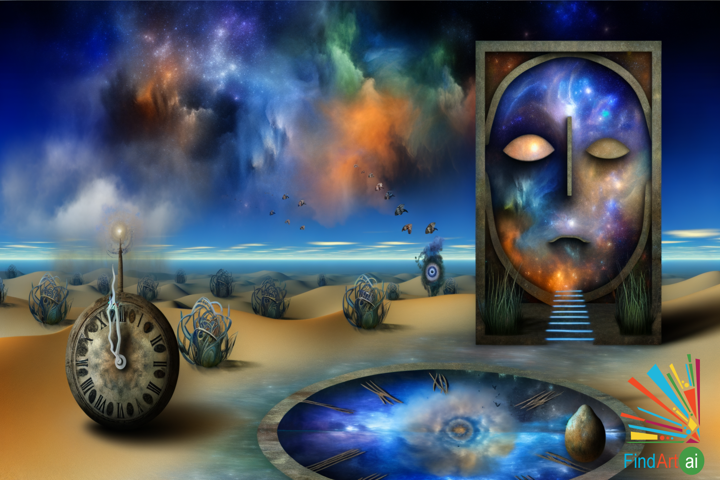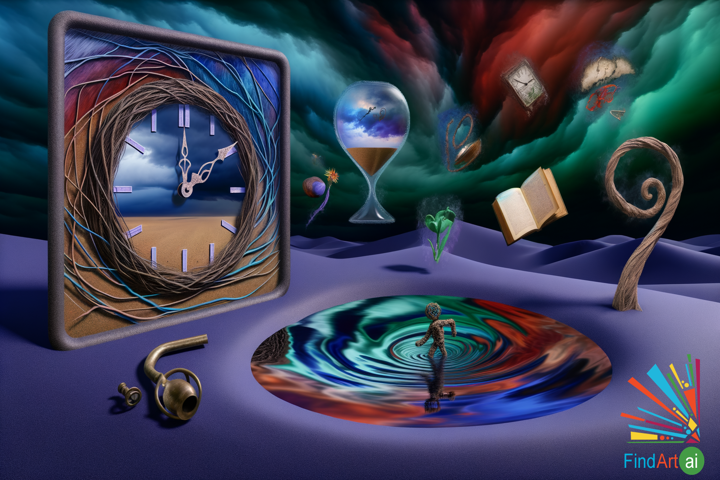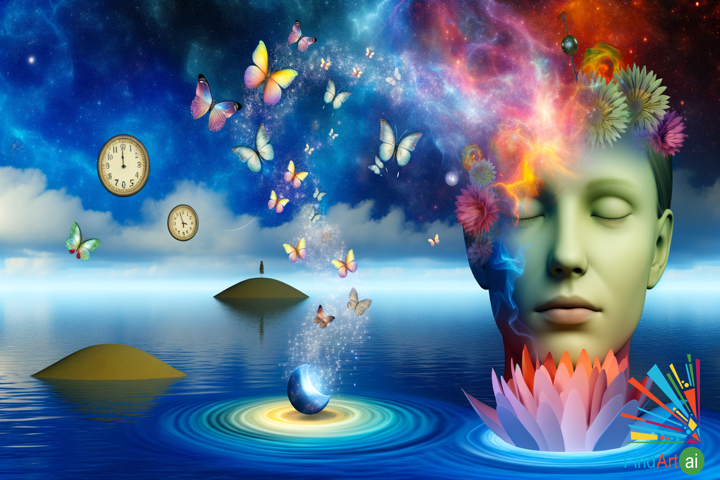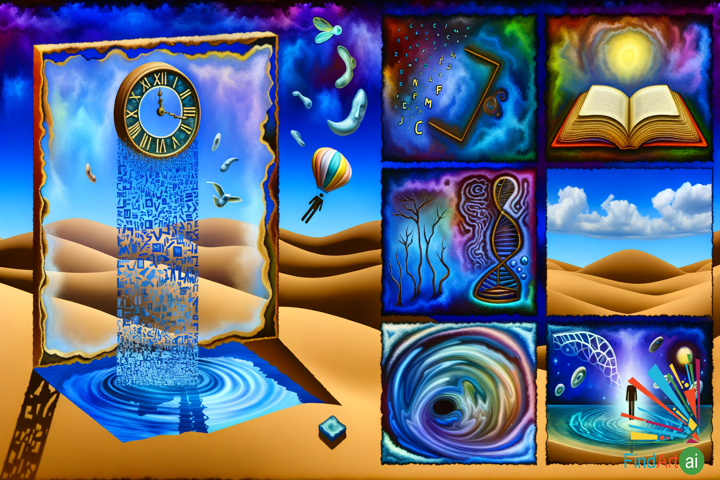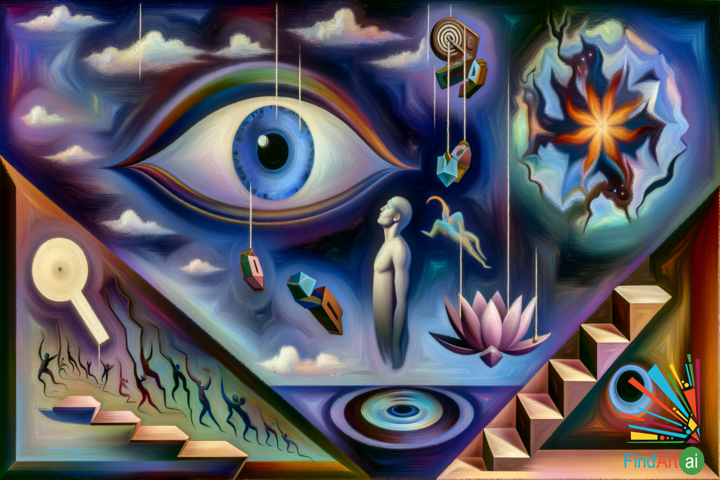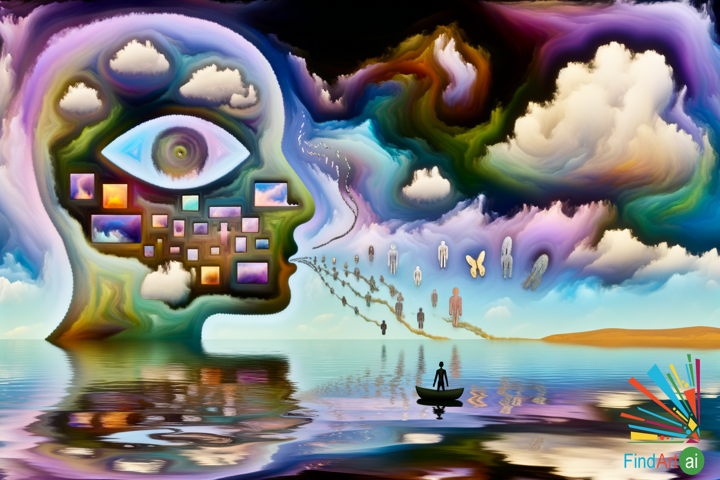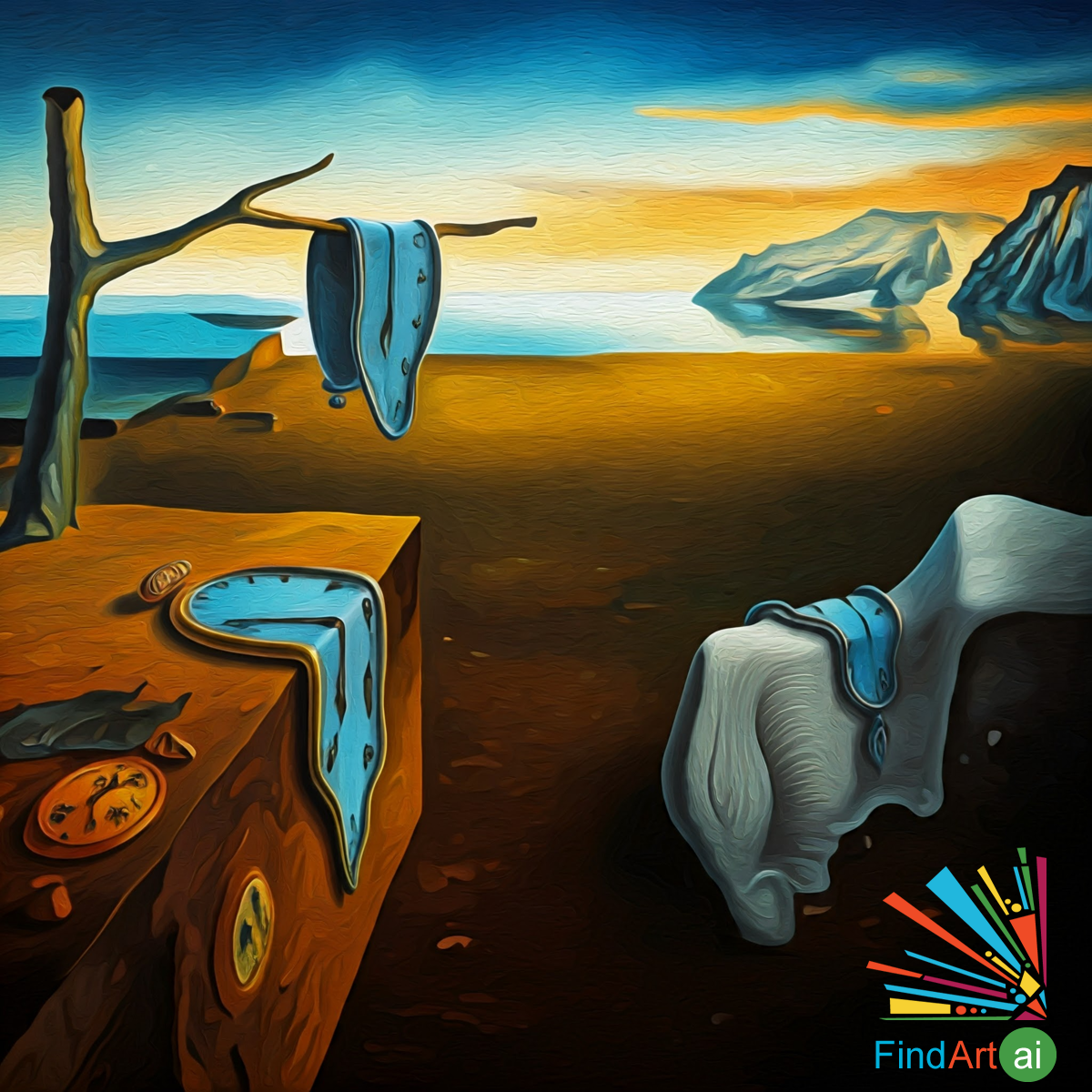
Surrealism Paintings with The Unconscious Mind Theme
Surrealism paintings with a focus on the Unconscious Mind theme explore the inner workings of the subconscious, revealing dreams, fantasies, and repressed emotions through fantastical, irrational, and often bizarre imagery. Rooted in psychoanalytic theories, particularly those of Sigmund Freud, Surrealist artists sought to bypass rational thought and access the unconscious mind, using dreamlike scenarios, unexpected juxtapositions, and symbolic objects to create mysterious and thought-provoking compositions.
Key Characteristics of Surrealist Paintings with the Unconscious Mind Theme
- Dreamlike Atmospheres
- Surrealist paintings often depict landscapes or scenes that resemble dream environments, where the laws of reality are suspended. Objects may float, time may distort, and perspectives may shift in ways that mimic the fluidity of dreams and the unpredictable nature of the unconscious mind.
- Example: Salvador Dalí’s The Persistence of Memory (1931), with its melting clocks and surreal desert landscape, evokes a dreamlike atmosphere where time behaves irrationally, symbolizing the fluidity of memory and perception.
- Juxtaposition of Unrelated Objects
- Surrealist artists place familiar objects together in strange or unexpected ways, creating uncanny, often disorienting imagery. These juxtapositions are intended to provoke a deeper emotional or psychological response, revealing hidden connections between seemingly unrelated things.
- Example: René Magritte’s The Lovers (1928), where two figures kiss while their heads are shrouded in fabric, combines intimacy with obstruction, reflecting the tension between desire and emotional distance in the unconscious.
- Automatism and Free Association
- Surrealists often employed techniques like automatism (automatic drawing or painting) and free association to allow the unconscious mind to guide the creative process. This spontaneous approach avoids premeditation, letting the subconscious influence the forms and symbols that emerge in the artwork.
- Example: Joan Miró’s Harlequin’s Carnival (1924-25), filled with playful, abstract shapes and creatures, was created through automatism, letting the artist’s unconscious thoughts shape the surreal, chaotic imagery.
- Symbolic and Archetypal Imagery
- Surrealist paintings frequently use symbolic objects that represent deeper psychological themes, such as the human condition, sexuality, fear, or transformation. These symbols are often derived from personal or collective unconscious archetypes and can be interpreted in various ways.
- Example: Max Ernst’s The Elephant Celebes (1921) features an elephant-like mechanical figure, symbolizing the merging of the natural and mechanical worlds, hinting at subconscious fears of modernity and industrialization.
- Dislocation of Time and Space
- Surrealist artists distort time and space in their paintings, creating scenes where the ordinary flow of reality is interrupted or rearranged. These disruptions represent the non-linear, fragmented nature of thoughts, dreams, and the unconscious.
- Example: Giorgio de Chirico’s The Mystery and Melancholy of a Street (1914), with its exaggerated, shadowed perspective and empty urban landscape, evokes a sense of timelessness and surreal unease, as if the viewer has entered a suspended, dreamlike reality.
- Transformation and Metamorphosis
- Surrealist paintings often depict transformation and metamorphosis, where one object or figure morphs into another in unexpected ways. This reflects the subconscious mind’s ability to blur boundaries and merge ideas, thoughts, or desires.
- Example: Dalí’s Metamorphosis of Narcissus (1937), where a human figure transforms into a hand holding an egg, symbolizes psychological transformation and the tension between self-reflection and self-obsession.
- Psychological Depth and Emotional Ambiguity
- Surrealist paintings delve into the deeper layers of the psyche, exploring repressed fears, desires, and emotions. These works often evoke a sense of emotional ambiguity or unease, reflecting the complex and contradictory nature of the unconscious mind.
- Example: Frida Kahlo’s The Two Fridas (1939) depicts two versions of the artist, one in traditional Mexican dress and the other in European attire, symbolizing her inner psychological conflict and dual identity.
Common Themes in Surrealist Paintings with the Unconscious Mind
- Dreams and Nightmares
- Surrealist paintings frequently depict dreamlike scenarios where ordinary objects are transformed, creating an uncanny, otherworldly atmosphere. These dreamscapes often reflect deep-seated fears, desires, or unresolved psychological conflicts.
- Example: Yves Tanguy’s Indefinite Divisibility (1942), where bizarre, organic shapes populate a barren landscape, evokes the feeling of a mysterious, nightmarish dream.
- Subconscious Desires
- Surrealism often explores hidden desires, particularly those related to sexuality and taboo emotions. These desires are represented through symbolic or metaphorical imagery, offering insight into the workings of the subconscious.
- Example: Magritte’s The Lovers II (1928), where the figures' faces are obscured by cloth, represents the tension between intimacy and emotional distance, symbolizing repressed desires.
- Freudian Influence
- Many Surrealist artists were influenced by Sigmund Freud’s theories of the unconscious, using Freudian symbols and concepts such as repression, the id, ego, and super-ego. The exploration of sexual repression, childhood trauma, and latent fears is common in their work.
- Example: Salvador Dalí’s The Great Masturbator (1929) depicts fragmented, symbolic elements like insects, distorted faces, and genital imagery, reflecting Freudian themes of sexual anxiety and desire.
- Surreal Humor and Absurdity
- Though many Surrealist works are serious explorations of the unconscious, there is also a playful, absurd side to Surrealism. The bizarre combinations of objects and surreal juxtapositions can evoke a sense of whimsy or dark humor, reflecting the irrational and unpredictable nature of the mind.
- Example: Magritte’s The Treachery of Images (1929), with the phrase “Ceci n'est pas une pipe” (This is not a pipe) under a painted pipe, plays with perception and reality, humorously questioning the relationship between objects and their representations.
Echoes of the Unseen: A Surreal Journey Through Reality and Imagination's Dance
"Echoes of the Unseen" invites you into a surreal world where reality and imagination intertwine. Be...
Explore a Dreamscape: Reality and Fantasy Merge in 'Whispers of the Subconscious'
"Whispers of the Subconscious" invites you into a dreamscape where reality melds with fantasy. A vas...
Unveiled Depths: Surreal Painting of Dreams, Time, and the Unconscious Mind
"The Unveiled Depths" is a surreal painting exploring the enigmatic landscape of the unconscious min...
Echoes of the Subconscious: Journey Through a Surreal Dreamscape of Time and Imagination
"Echoes of the Subconscious" invites you into a surreal dreamscape where reality and imagination int...
Whispers of the Subconscious: A Dreamscape Merging Imagination, Reality, and Cultural Symbols
"Whispers of the Subconscious" invites viewers into a dreamscape where imagination and reality blur....
Whispers of the Unconscious: Explore a Dreamlike Realm Where Reality and Imagination Blur
"Whispers of the Unconscious" invites you into a dreamlike realm where reality and imagination blur....

